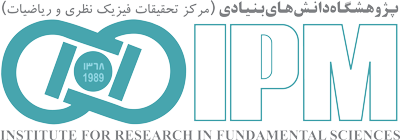“School of Astronomy”
Back to Papers HomeBack to Papers of School of Astronomy
| Paper IPM / Astronomy / 17007 |
|
||||||||||||||||||||||||||||||||||||||||||||||||||||||
| Abstract: | |||||||||||||||||||||||||||||||||||||||||||||||||||||||
|
Context. Cosmic rays and magnetic fields are key ingredients in galaxy evolution, regulating both stellar feedback and star formation.
Their properties can be studied with low-frequency radio continuum observations that are free from thermal contamination.
Aims. We define a sample of 76 nearby (<30 Mpc) galaxies with rich ancillary data in the radio continuum and infrared from the
CHANG-ES and KINGFISH surveys, which will be observed with the LOFAR Two-metre Sky Survey (LoTSS) at 144 MHz.
Methods. We present maps for 45 of them as part of the LoTSS data release 2 (LoTSS-DR2), where we measure integrated flux
densities and study integrated and spatially resolved radio spectral indices. We investigate the radioa star formation rate (SFR) relation
using SFRs derived from total infrared and emission.
Results. The radioa SFR relation at 144 MHz is clearly super-linear with L144 MHz a SFR1.4a 1.5. The mean integrated radio spectral
index between 144 and 1400 MHz is 0.56 A 0.14, in agreement with the injection spectral index for cosmic ray electrons
(CREs). However, the radio spectral index maps show variation of spectral indices with flatter spectra associated with star-forming
regions and steeper spectra in galaxy outskirts and, in particular, in extra-planar regions. We found that galaxies with high SFRs have
steeper radio spectra; we find similar correlations with galaxy size, mass, and rotation speed.
Conclusions. Galaxies that are larger and more massive are better electron calorimeters, meaning that the CRE lose a higher fraction
of their energy within the galaxies. This explains the super-linear radio-SFR relation, with more massive, star-forming galaxies
being radio bright. We propose a semi-calorimetric radio SFR relation that employs the galaxy mass as a proxy for the calorimetric
efficiency.
Download TeX format |
|||||||||||||||||||||||||||||||||||||||||||||||||||||||
| back to top | |||||||||||||||||||||||||||||||||||||||||||||||||||||||



















